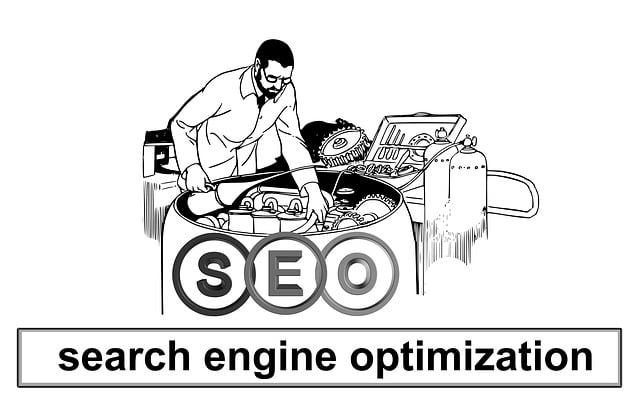By 2025, Visual Search Optimization (VSO) is poised to revolutionize user interaction with online content. Driven by advancements in AI and machine learning, VSO delivers more accurate search results based on visual queries. Businesses must optimize their visual content using structured data, alt tags, and best practices to stay competitive. Key SEO trends for 2025 include integrating visual search capabilities, optimizing for voice and long-tail keywords, leveraging AI, ensuring robust mobile optimization, and focusing on local SEO. Optimizing images with descriptive file names, compressing for faster loading times, and using relevant keywords in image text are crucial best practices. AI will play a significant role in interpreting visual content accurately, improving user experiences, and opening new marketing opportunities. VSO's growing importance is evident in success stories from fashion retailers and travel agencies, setting the stage for a future where visual content dominates digital marketing.
Visual search optimization is transforming how we interact with online content. As a burgeoning SEO trend in 2025, understanding this dynamic shift is crucial for staying ahead in digital marketing. This article delves into the evolution of visual search, explores key considerations for optimizing images and leveraging AI, and highlights successful implementations. By examining these aspects, businesses can enhance user experiences and capitalize on emerging SEO trends in 2025 and beyond.
Understanding Visual Search Optimization: The Rising Trend

Visual Search Optimization (VSO) is a rapidly growing trend in the digital landscape, transforming how users interact with online content. As one of the prominent SEO trends in 2025, VSO leverages image and video search capabilities to deliver more relevant results based on visual queries. With advancements in artificial intelligence and machine learning, search engines can now interpret and understand images, making it easier for users to find products, styles, or specific items they see in their surroundings.
This evolving trend is reshaping user expectations, driving the need for businesses to optimize their visual content for discoverability. By incorporating structured data, alt tags, and other best practices, brands can ensure their visual assets are not only visually appealing but also search-engine friendly. As users become increasingly adept at using visual searches, those who prioritize VSO will gain a significant competitive edge in the digital market.
How Has Visual Search Evolved in Recent Years?

In recent years, visual search has undergone a remarkable evolution, driven by advancements in technology and changes in consumer behavior. With the rise of image recognition AI, users can now directly search for products, places, and even artistic styles by uploading or capturing images, rather than typing keywords. This shift is significantly impacting SEO trends in 2025, as businesses are increasingly optimizing their content for visual queries.
Visual search technology has become more sophisticated, enabling more accurate results. From fashion brands to travel agencies, businesses are integrating visual search capabilities into their websites and apps to enhance user experiences. As consumers become more visually savvy, understanding and implementing effective visual SEO strategies will be crucial for standing out in the competitive online landscape of 2025.
Key SEO Considerations for 2025 and Beyond

With the constant evolution of technology, staying ahead of the curve is essential for businesses aiming to excel in SEO Trends 2025 and beyond. Voice search optimization will continue to grow in importance as more users turn to assistants like Siri or Alexa. Therefore, optimizing content for long-tail keywords and natural language queries becomes crucial. Visual search, powered by AI, is another trend to watch; enhancing website performance by incorporating rich, descriptive images and ensuring they’re optimized with relevant alt tags can significantly improve visibility.
Mobile optimization remains indispensable as the majority of searches now originate from smartphones. Ensuring fast loading times, responsive design, and a seamless user experience across all devices will be key. Additionally, leveraging local SEO strategies is vital for businesses targeting regional customers, focusing on accurate NAP (Name, Address, Phone number) citations and engaging with local communities.
Optimizing Images for Search Engines: Best Practices

In the ever-evolving landscape of SEO trends in 2025, optimizing images for search engines remains a vital component. To ensure your visual content is discoverable, it’s crucial to implement best practices that align with modern algorithms. Start by using descriptive file names and alt tags; these serve as the foundation for search engine indexing, providing context and enhancing accessibility. Additionally, compressing images without losing quality reduces loading times, improving user experience – a key factor in SEO rankings.
Further optimization strategies include adding relevant keywords within image text and leveraging structured data markup for enhanced metadata. Keeping up with these SEO trends ensures that your website’s visual assets contribute positively to its overall search engine visibility. Remember, as search algorithms continue to refine, staying ahead means adhering to practices that not only meet current standards but also anticipate future developments in the dynamic world of digital marketing.
The Role of Artificial Intelligence in Visual Search

Artificial intelligence (AI) is transforming the landscape of visual search, marking it as one of the prominent SEO trends in 2025. By leveraging machine learning algorithms, AI-powered tools can analyze and interpret images with remarkable accuracy, enabling users to find specific products or information based on visual cues. This technology goes beyond traditional keyword searches, offering a more intuitive and interactive experience. With advancements in computer vision, AI systems can identify objects, scenes, colors, and patterns within images, making it easier for users to locate relevant content.
The integration of AI in visual search provides numerous benefits for both users and businesses. For users, it means faster and more precise results, eliminating the need for lengthy text searches. For marketers and content creators, AI-driven visual search opens up new opportunities for targeted advertising and personalized content delivery. As SEO strategies evolve, understanding and implementing these cutting-edge technologies will be crucial to staying ahead in the competitive digital arena.
Enhancing User Experience through Visual Search

Visual search is revolutionizing the way users interact with online content, and it’s set to be a prominent SEO trend in 2025. By leveraging images and visual elements, users can now perform searches with just a glance, making the entire process faster and more intuitive. This technology goes beyond traditional text-based queries, catering to a visually driven generation. As such, optimizing for visual search is crucial for enhancing user experience and staying competitive in the digital landscape.
By incorporating rich media, alt tags, and structured data into web content, businesses can ensure their sites are visually searchable. These strategies enable search engines to understand and interpret images, allowing them to appear in relevant visual search results. As user expectations continue to evolve, embracing these SEO trends will be key to delivering exceptional experiences and driving engagement.
Case Studies: Successful Visual SEO Implementations

Visual Search Optimization (VSO) is transforming the way users interact with online content, and its impact will only grow in 2025. Case studies from leading brands reveal compelling examples of successful VSO implementations. For instance, fashion retailers have seen significant boosts in sales by optimizing product image searches, allowing shoppers to find specific styles and colors more easily. These strategies involve detailed tagging, high-quality visuals, and seamless integration with voice search technologies, ensuring a user-friendly experience that aligns with the evolving SEO trends of 2025.
Another successful example comes from travel agencies, which use rich visual content to showcase destinations and inspire users. By optimizing images with location tags, relevant keywords, and compelling captions, these platforms enhance discoverability on image search engines, driving traffic and bookings. These real-world applications demonstrate that VSO is not just a passing trend but a fundamental aspect of modern SEO strategies, set to redefine digital marketing in the coming years.
Future Prospects and Predictions for Visual Search Optimization

The future of visual search optimization looks promising, with predictions suggesting a significant rise in its integration across various industries by 2025. As SEO trends evolve, visual search is expected to play a pivotal role in enhancing user experiences and driving business growth. With advancements in artificial intelligence (AI) and machine learning, algorithms will become more adept at understanding and interpreting visual content, leading to accurate and relevant search results. This shift will encourage businesses to prioritize optimizing their visual assets, including images, videos, and infographics, to ensure they align with the latest SEO standards.
By 2025, we can anticipate a more seamless integration of visual search into e-commerce platforms, social media, and content marketing strategies. Personalized visual recommendations will become commonplace, offering users tailored suggestions based on their browsing history and preferences. This development will not only improve user engagement but also increase conversion rates for online retailers. Additionally, the ability to search using images from mobile devices will further revolutionize the way consumers interact with digital content, making online shopping more intuitive and efficient.
